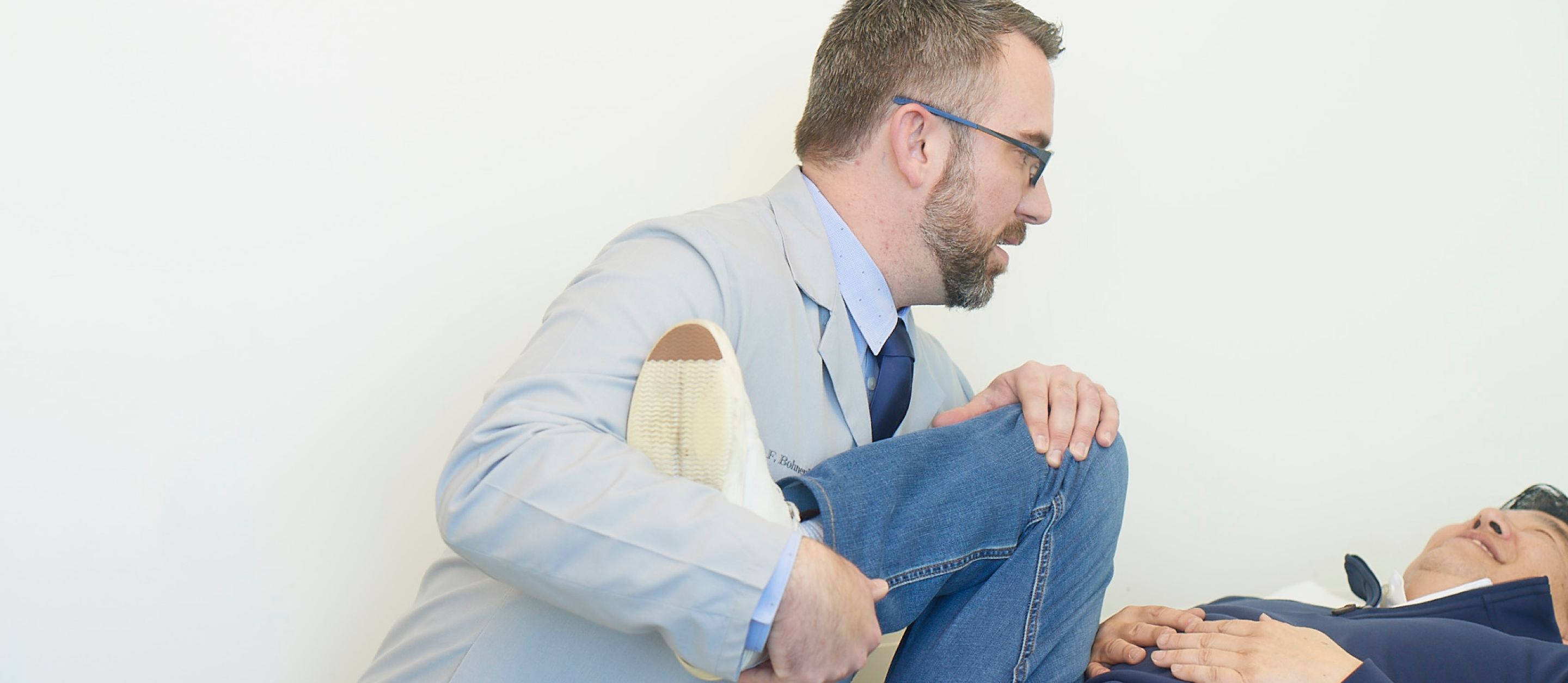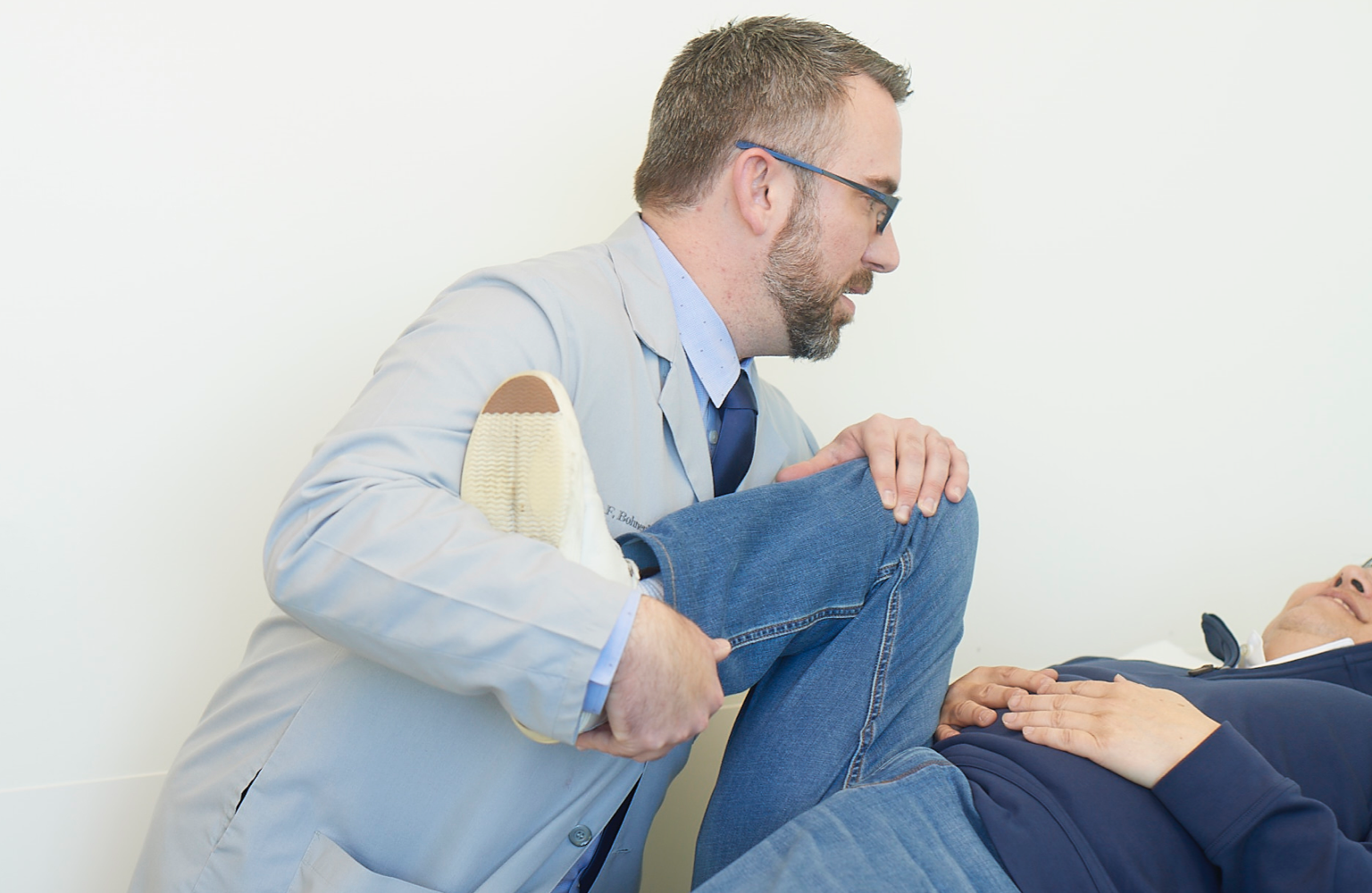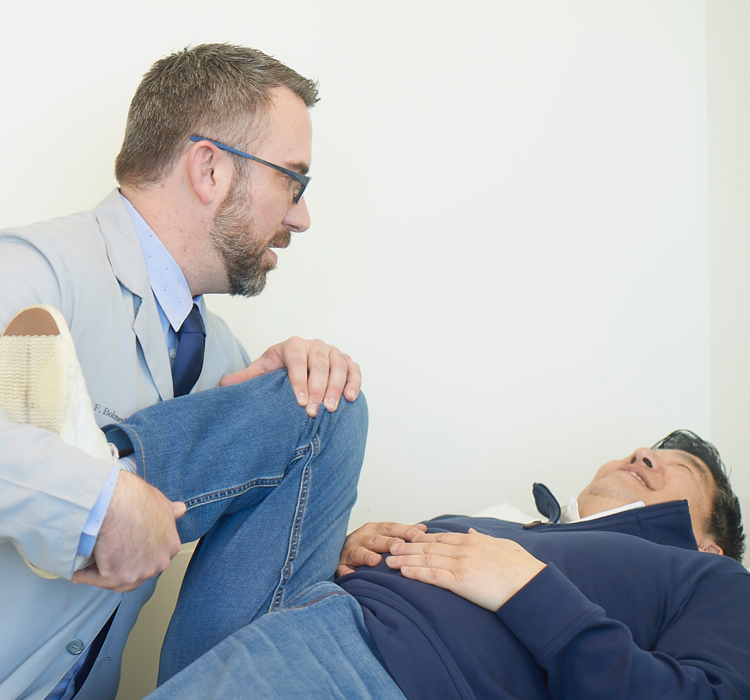Dr. Bohnenkamp is an expert Board-Certified and Fellowship-trained surgeon with a background in engineering. He became a surgeon because he truly cares about helping patients like you. When it comes to the care of your knees, rest assured, but be motivated—because Dr. Bohnenkamp will find the treatment to change your life for the better.



Arthritis is one of the most common causes of knee pain. Although it may seem like a simple explanation of “joint inflammation,” knee arthritis can make it hard to do many everyday activities. Common signs and symptoms include:
Otherwise known as “wear-and-tear arthritis,” osteoarthritis is the gradual deterioration of cartilage that cushions the end of bones. Once cartilage has worn away, bone rubbing on bone can cause friction and pain. Common signs and symptoms of osteoarthritis include:
Inflammatory arthritis occurs when joints are inflamed due to an overactive immune system. The knee joint is just one of the many areas in which inflammatory arthritis is prevalent. Common signs and symptoms of inflammatory arthritis include:
Osteonecrosis is a painful bone condition that occurs when blood supply to bone tissue is disrupted or cut off. This can cause tiny breaks in the bone and lead to eventual collapse of the bone. Common signs and symptoms of osteonecrosis include:
Pain after a total knee replacement, while frustrating, is possible. When understanding your condition, it is important to observe some improvement. The rate of improvement might differ from patient to patient. If no improvement is seen in pain after a total knee replacement for more than two years after surgery, this requires an evaluation from a total joint specialist. Rarely, this pain may be due to:
Tendonitis and bursitis are inflammation of joints. The most common form of knee tendonitis is patellar tendonitis, or “jumper’s knee”. Bursitis affects the small, fluid-filled sacs that serve as cushion and reduce friction for your bones. Common signs and symptoms of knee tendonitis and bursitis include:
One of the most common knee injuries, a meniscus tear is a tear of the C-shaped cartilage between your shinbone and thighbone that typically occurs when an activity causes you to forcefully twist or rotate your knee, especially when putting full weight on it. Common signs and symptoms of a meniscus tear include:
A knee fracture is the fracture of your kneecap (patella) that can be a small, partial crack in the bone or a severe complete break from top to bottom. Common signs and symptoms of a knee fracture includes:
Dr. Bohnenkamp is a specialist in minimally invasive knee procedures. He utilizes computer navigation and modern techniques to minimize pain and restore function, getting you back on your feet as soon as possible. Visit our procedures page to learn how Dr. Bohnenkamp can help.
Learn More About Knee ProceduresAfter diagnosis, Dr. Bohnenkamp focuses on conservative care. This means alleviating pain through a wide range of treatments that will get to the heart of where it hurts. Our goal as a care team is to create the right treatment that is specific to your body. These treatments may include:
Physical therapy is about targeting specific muscles or muscle groups to increase strength and flexibility. Dr. Bohnenkamp focuses on general conditioning as a safe and effective way to relieve pain, prevent further injury, and restore range of motion. Areas of focus in physical therapy may include:
This is no ordinary surgical experience. Rather than rushing you right into surgery, Dr. Bohnenkamp takes the time to make the decision that’s right for you—with you. Dr. Bohnenkamp’s surgeries are proven to have quicker patient recoveries and better patient outcomes. Surgeries may include: